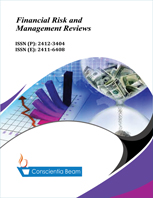Modelling Stock Returns Volatility and Asymmetric News Effect: A Global Perspective
DOI:
https://doi.org/10.18488/journal.89.2021.71.1.15Abstract
This paper modelled stock returns volatility using daily S&P Global 1200 index from 1st September, 2010 to 30th September, 2020. The S&P 1200 represents a free-float weighted stock market index of global equities covering seven (7) regional stock market indices and approximately 70% of the global market capitalization, hence was used to compute global stock returns. The data analysis was carried out with Generalized Autoregressive Conditional Heteroskedasticity (GARCH) techniques. Of the variant GARCH models specified in this study, the symmetric GARCH-M (1,1) and the asymmetric TGARCH (1,1) models were found suitable for the estimation. The findings from the GARCH-M and TGARCH models revealed explosive volatility persistence and strong asymmetric news effect in the global stock market, respectively. The implication of volatility persistence is that current volatility shocks influenced expected returns over a long period. The asymmetric news effect showed that negative news (bad news) spurred stock returns volatility than positive news (good news) especially in 2020 which was due to the COVID-19 crisis as shown by the plot of the conditional variance. These results were consistent with the empirical findings of a number of studies in emerging markets. Hence, the study concludes that the global stock market exhibited high volatility persistence and leverage effect during the sampled period.

